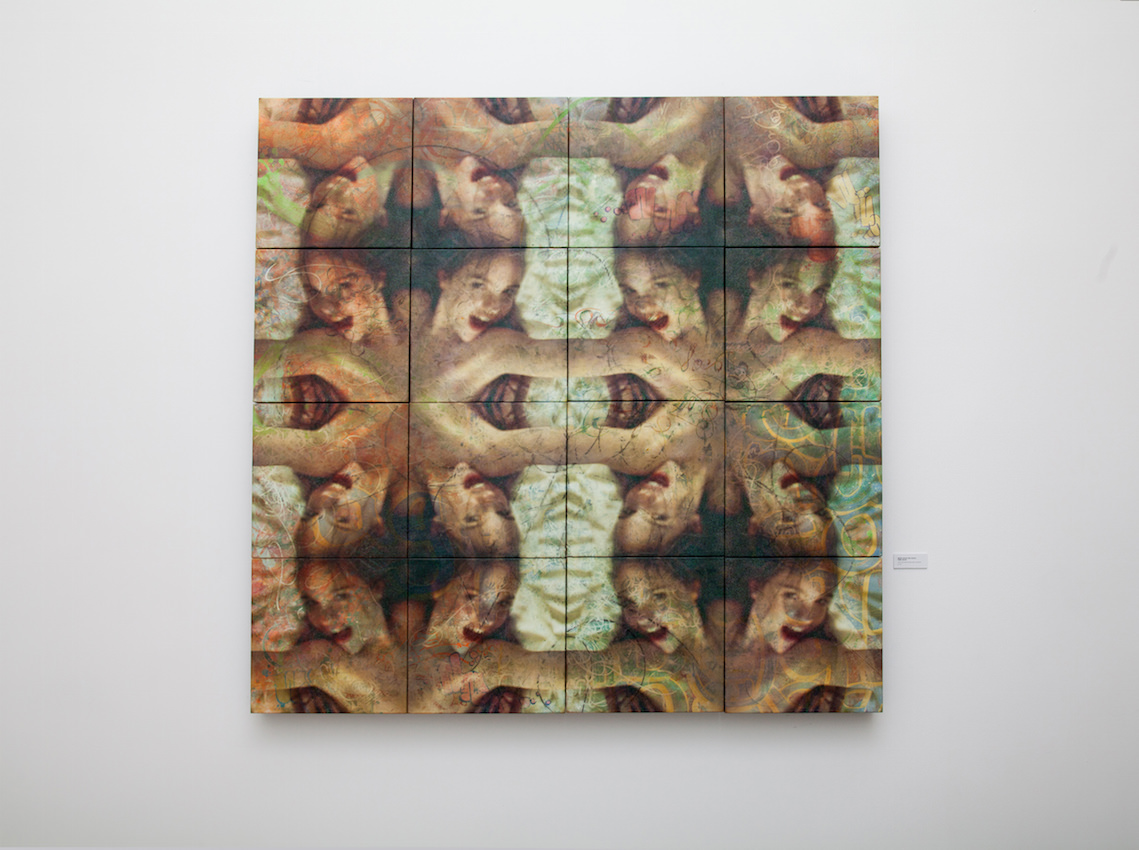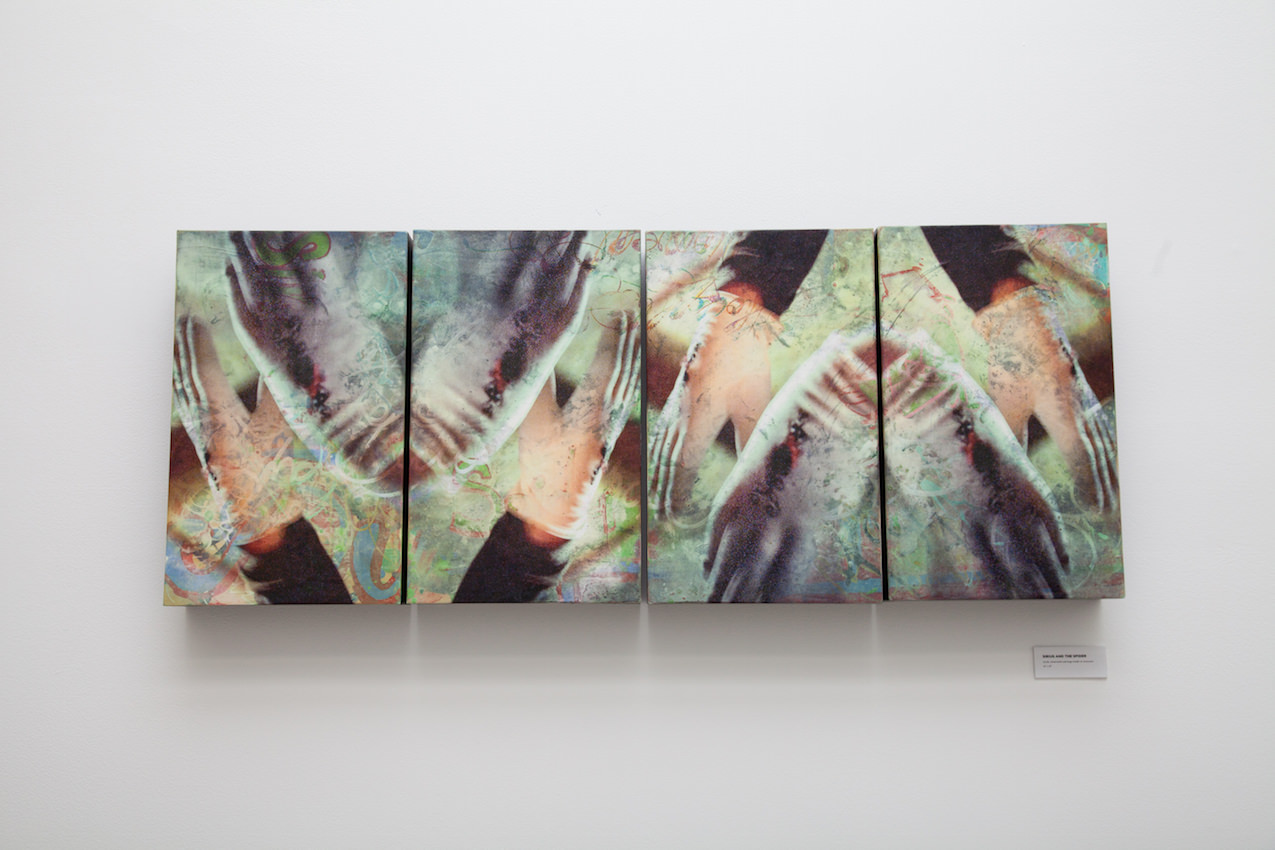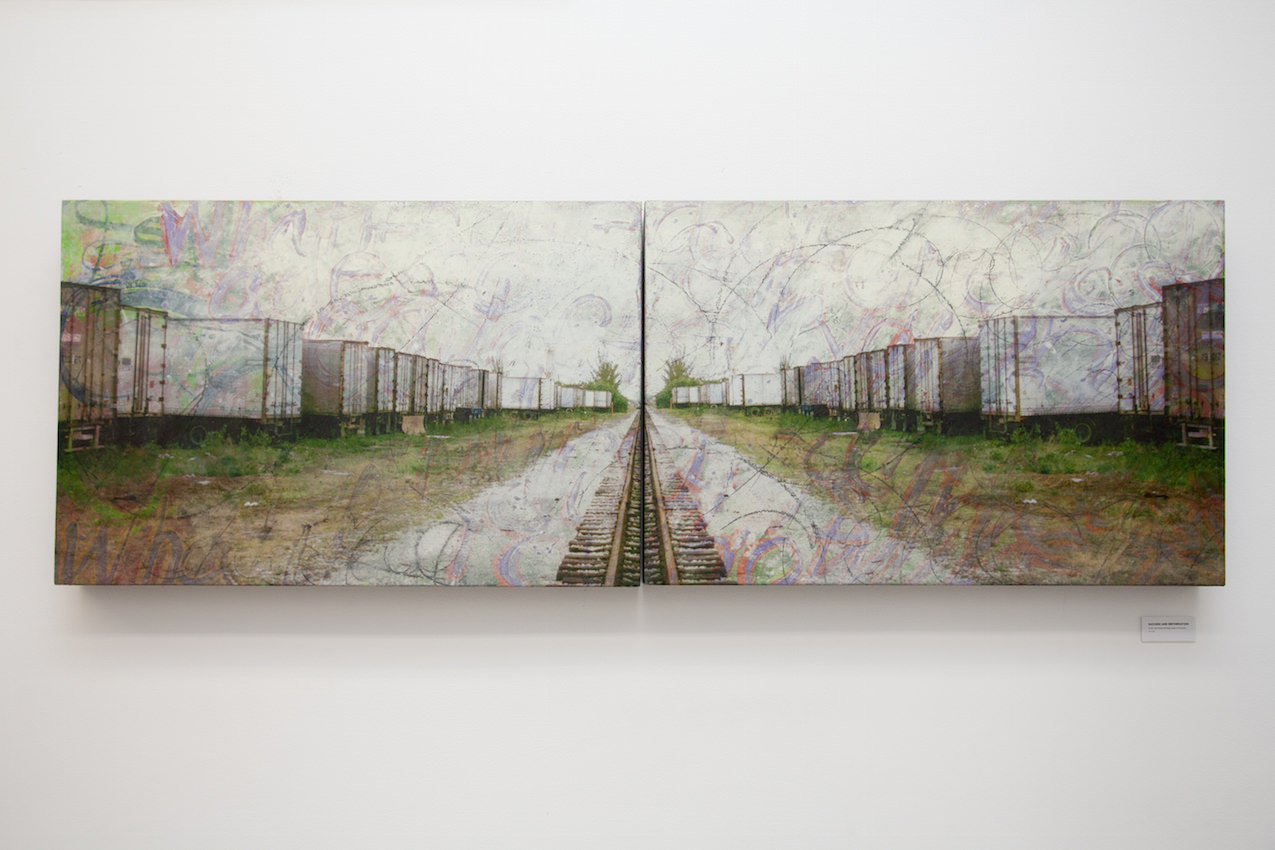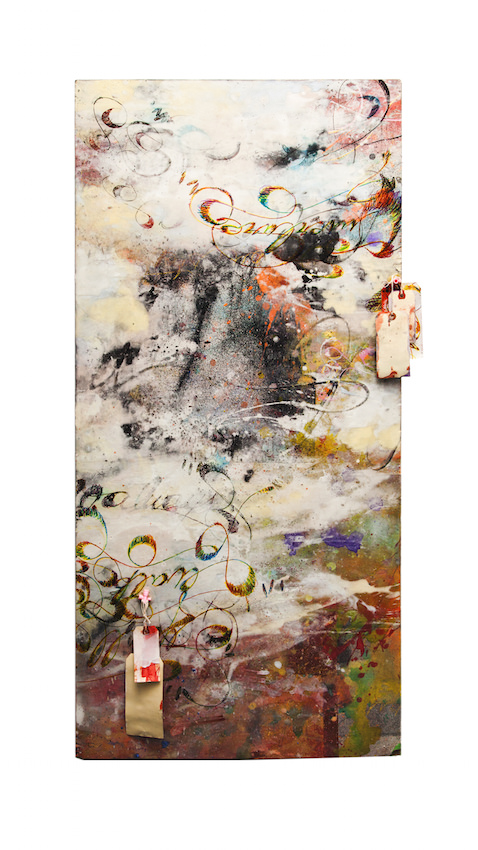When he was spreading the gospel of creativity as a graffiti writer through the 1980s, ’90s, and naughts, Pablo Power saw the city as an already-painted canvas. Inhabitants consciously or unconsciously add layers of information to its surfaces so that, in plain sight, a single city wall publishes myriad secret histories that form the living face of the metropolis. Instead of writing that backgrounded or was framed by the city, Power was creating urban readymades, introducing “something colorful, crafted, and considerate” into places that time and the mainstream world had forgotten, overlooked, or avoided on its way home from work at night.
His work was predicated on, and became wholly a part of, its context—the layers it lay on as well as those that would overlay it one day. While living in Miami and New York, Power began to photograph the people and process behind the writing, which led him in 1999 to photographing the lives lived on and around it. This spring some of that documentary work was on view at Tribeca’s No Romance Galleries in “A Circle Unbroken: Tributes in Pattern” (and published in the book Manifold Machinations: Tribute Refined this summer), a mash-up of photography, collage, pattern, painted murals, panels, and sculptural readymades.

Pablo Power
Begin Again And Again, Then Again
2015
64 x 64 inches
Acrylic, mixed media, and photo image transfer on wood panel
Courtesy of the artist
Now based in Brooklyn, Power documents street life by living temporarily where he shoots, sometimes on the street, in Detroit, Washington, D.C., Bayley Town, the Bahamas, and Atlantic City, but most deeply in New York City, along Reno, Nevada’s, sketchy Fourth Street, and across turbulent Miami neighborhoods close to where he grew up: Little Haiti, Wynwood, Overtown, Lemon City, El Portal, and Liberty City. The common thread among his multiple media? “The desire to form a bridge between divergent worlds,” Power says. Whitewall spoke to the artist about how writing on walls led to documenting the people and places that live—largely unseen—between them.
WHITEWALL: How do you enter these communities and lives to photograph?

Pablo Power
Sirius And The Spider
2015
44 x 18 inches
Acrylic, mixed media, and photo image transfer on wood panel
Courtesy of the artist
PABLO POWER: In Reno, I spent most of my time living in the cheapest motels I could find, moving from one to another after a couple of nights. Sometimes I’d even maintain one as a place to socialize and take pictures, but actually sleep in another one around the corner in order to move more freely from one subject to another. Other times, I’d move into a room with someone I met or have them live with me for a couple of days. Sometimes I’d sleep outdoors or not at all, and just roam the streets with people all night. I spent six weeks there the first time and two weeks later on. I stayed in touch with some people for a while after returning home, but it’s impossible to maintain contact for very long because they’re constantly on the move. Nearly every interaction transcended a simple photo session, though, so I’ll hold onto many of the individual experiences in my daily life.
WW: What is possible to learn about people based on the traces they leave behind in the spaces they inhabit?

Pablo Power
Success And Reformation
2015
72’ x 24”
Acrylic, mixed media, and photo image transfer on wood panel
Courtesy of the artist
PP: Place can maintain a connection between past and present, the known and unknown. By spending time in a place, a narrative takes shape to the point where sometimes the spaces come to life as a character in the story themselves. Clues to daily routines and habits can be gleaned by seeing what was left behind, what appears to still be in use, and what is deteriorating in the rubble. Printed materials, writings made in various states of coherency, and abandoned photos offer glimpses into mental states. People’s sleeping arrangements and the level of comfort they try to maintain in a ruined space are some of the most revealing signs to read.
WW: Do the graffiti and your documentary work and artwork have anything in common?

Pablo Power
Auto Didactic Transcendence, Privilege Of Pedantry, And Stultifying Sciolism
2010
24 x 48 inches
Acrylic and mixed media on wood panel
Courtesy of the artist
PP: There are direct connections between the days of roaming the streets for the purpose of writing on everything to spending time in similar areas to document the people in them. The photos, street works, and studio works of various media all share a common theme and motivation: to create a record through tribute. A lot of the writing subculture, consciously or not, is based on learning or appropriating from one’s predecessors. Visually and stylistically, my studio works incorporate some of the media and techniques that I first used in the street, but they all are a reminder to myself that the past is relevant and an attempt to keep history current.
WW: Does the graffiti become part of the history of a place, a frame to its history, or both?
PP: It’s a unique and curious vocation in that, on the one hand, it’s an end point: the byproduct of wanting to introduce something creative into a place that’s otherwise bereft of that spirit. In another, it’s a bridge between different elements of the narrative.
WW: Layering of imagery and text is common to varying degrees in all your work. Do layers tell a “truer” story?
PP: Over periods of working exclusively in one medium, I found each of them limited—when used individually—in their ability to portray what I was trying to record. Life is a delicate balance of different strata, not a mix of them; they build on one another to form a history. I use a combination of media and elements to reflect that.
WW: Michael Betancourt quoted you as saying that from an outsider’s perspective these people may look stranded, abandoned, or in dire straits, but that in reality some of them weren’t “really trying to make any moves.” Many of them were just passing through, but others “had just stopped trying to leave after awhile.” What has surprised you most about human nature while shooting?
PP: What surprised me most was discovering how closely different people and communities can live to each other but still never understand or even know about one another. That discovery showed me the importance of making yourself open to your surroundings and always being able to look past the surfaces.
This interview is published in Whitewall‘s winter 2016 Lifestyle Issue.








